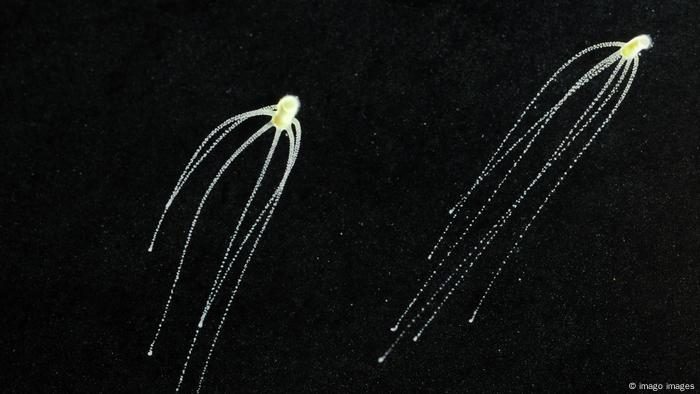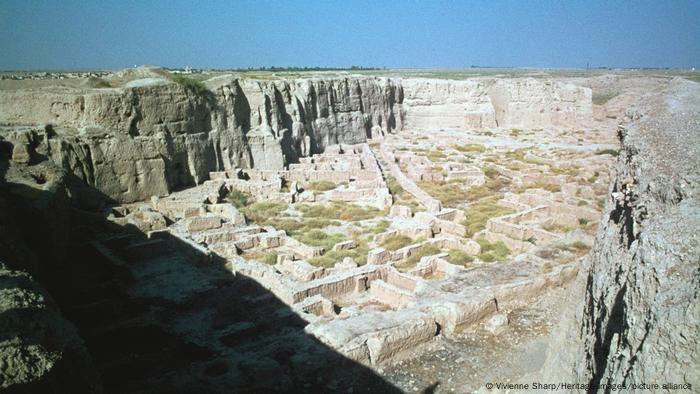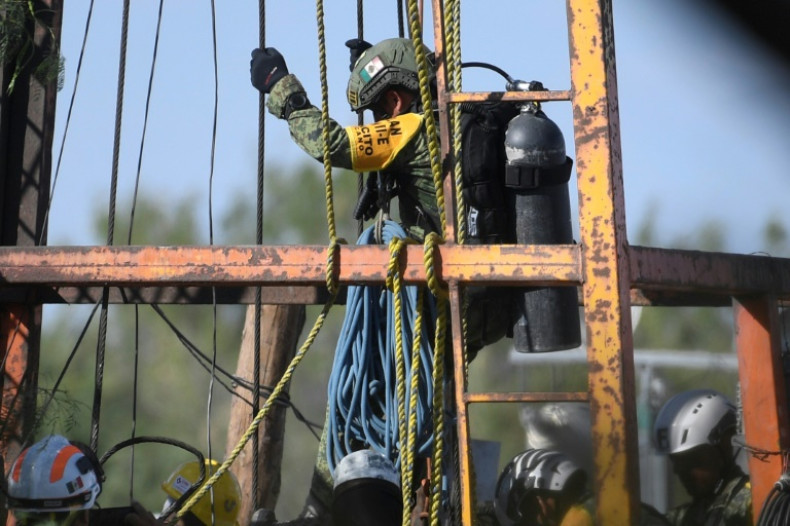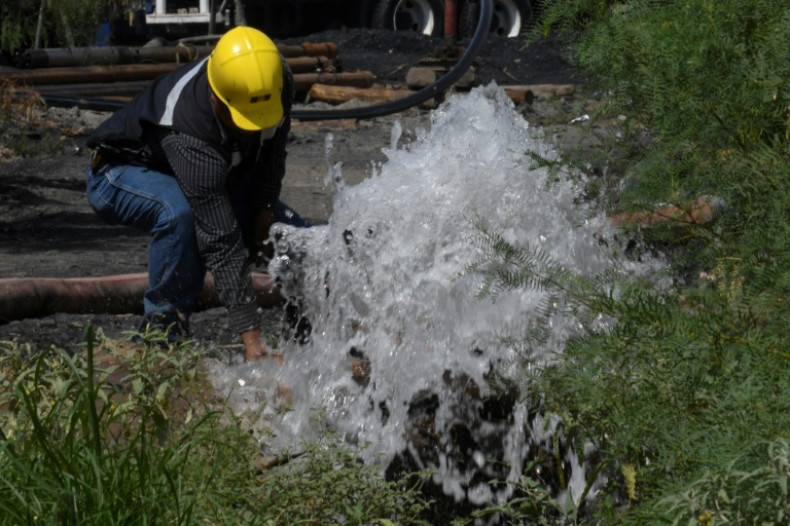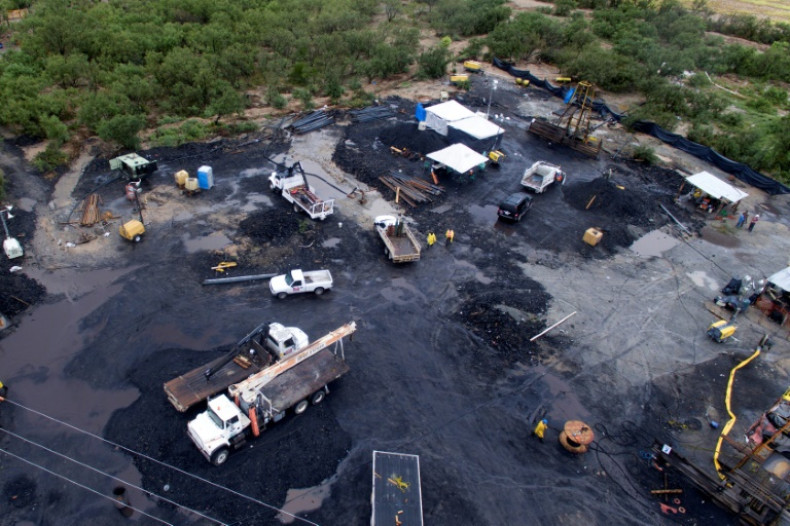The cost of Orban's pro-Russian policy offers nothing to win but much to lose
Hungarian Prime Minister Viktor Orban is determined to maintain good relations with Moscow, at times making himself the Kremlin's mouthpiece. The price for Hungary is high, says Zsuzsanna Vegh in a guest column.

Hungarian Prime Minister Viktor Orban (right) has maintained close ties
with Russian President Vladimir Putin (left)
Hungarian Prime Minister Viktor Orban gave a speech in the Romanian resort of Baile Tusnad this past July that caused widespread outrage. In his speech, he criticized the mixing of European and non-European races. In his view, this would lead to the displacement of peoples in Western Europe and the formation of "mixed" countries in a "post-Western" world.
This terminology, which was reminiscent of Nazi language, sparked international controversy. Orban's remarks about Russia and the Russian war against Ukraine, on the other hand, caused less of a stir. Nevertheless, they deserve at least as much attention.
In Baile Tusnad, Hungary's prime minister made himself the Kremlin's mouthpiece. He called understandable Russian security concerns about Ukraine's possible NATO membership, yet noting that this does not justify aggression. He also echoed Russian Foreign Minister Sergey Lavrov's threats that Russia would shift the combat front further west.
Disregard for Ukraine's sovereign rights
Orban not so subtly suggested that it was the West — and in particular the United States — that was responsible for the war because it had ignored Russia's concerns, while calling for immediate peace negotiations. In his view, however, such negotiations would not take place between Russia and Ukraine, rather between Russia and the United States. According to Orban, this is because it is the latter that can address Moscow's concerns.
Even if the Hungarian premier effectively stopped short of excusing Russia's aggression, such calls — and the complete disregard for Ukraine's sovereign right to pursue membership of the security alliance of its preference — reject Ukraine's agency, thereby embracing Russia's line of argument at the expense of those values and international commitments upon which Hungary's very own alliances are based.
Threat to veto sanctions against Russia
Giving preference to Russia's narrative is right in line with the policy the Hungarian government has pursued since Russia's invasion of Ukraine in February; namely, to prioritize good relations with Moscow and vocally challenge the EU's sanctions policy.
In June, it went so far as to threaten to veto the adoption of the sixth sanction package just to have Russian Patriarch Kirill removed from the EU's sanction list, even after successfully lobbying for an exemption from the EU's embargo on Russian oil.

What's more, while the EU called for a reduction in the bloc's dependence on Russian gas, Hungarian Foreign Minister Peter Szijjarto met his Russian counterpart in July to negotiate the delivery of an additional 700 million cubic meters of gas to Hungary.
It is important to note, however, that during his February visit, Orban himself had already discussed with Putin the delivery of an additional 1 billion cubic meters on top of the annual 4.5 billion cubic meters that had already been agreed, hoping — but failing — to strike a deal before the Hungarian parliamentary elections.
Orban's social policy at risk
Although Orban expected an agreement before the end of the summer, as of mid-August, that deal seems to be falling short of expectations. The secured additional amount for August only amounts to 52 million cubic meters — although negotiations are allegedly ongoing. Russia is not delivering the previously contracted volume due to restrictions on deliveries that would arrive through Austria.
This puts Orban's social policy of capping energy and utility costs for the Hungarian population at risk. During his visit to Moscow at the beginning of February, he stated that permanently low supply prices would be guaranteed if Russian gas supplies were secured.

Despite their closeness, Orban and Putin stood notably far from each
other at this toast in Moscow last February
So although the benefits to Hungary of Orban's pro-Russian stance are highly questionable, all of the above indicates it is unlikely that Hungary's stance on Russia will move any closer to that of its increasingly frustrated Western allies.
And quite apart from the usual criticism from EU institutions and the United States about rule of law issues that have already cemented Hungary's image as the EU's problem child, the Hungarian government's stance on Russia is costing it its most important ally: the Polish Law and Justice (PiS) government.
Deteriorating relations in Visegrad Group
According to Polish Prime Minister Mateusz Morawiecki, the paths of the two countries have diverged. Even Orban is now talking about saving cooperation for after the war.
Hungary's other two Visegrad allies, Slovakia and the Czech Republic, were already turning away from the Hungarian government before the war; the latter's pro-Russian stance has only served to exacerbate their differences.

Poland's right-wing populist PiS party, led by Jaroslaw Kaczynski (right),
would have a natural alliance with Viktor Orban (left)
The breakdown of relations between Poland's PiS and Orban's Fidesz also undermines Orban's ambition to build a new right-wing alliance across the EU. Yet Fidesz is set to continue cultivating these ties across various European countries regardless, carrying forward its hope that these parties will one day rise to power together.
Cooperation among right-wing forces
In fact, Orban's opening speech at the Conservative Political Action Conference (CPAC) in Texas on August 4, where he expressed support for former President Donald Trump and hope that he would return to power in 2024, demonstrates that he is committed to the long-term international cooperation of right-wing forces.

Speaking at CPAC, Orban expressed support for Donald Trump and his hope
that Trump would return to power in 2024
Putting all his eggs into one basket, so to speak, suggests that Orban is abandoning any attempts to improve ties with the current US administration. This attitude, which also characterizes his approach to the European mainstream, foreshadows further entrenchment of Hungary's conflict with its Western allies and a frosty time ahead for diplomatic relations, at a moment when unity is more important than at any time since the end of the Cold War.
Undermining Hungary's position
Although leaving the EU and in particular NATO is not in the cards for Hungary (because it is not in the government's interest), Orban's lamentations about the fall of the West and his recurrent gestures to its challengers — primarily Russia, but also China — will remain part of Hungary's toolkit. This is something the country's Western partners need to be prepared for.
While Orban seeks to enlarge Hungary's room to maneuver, in reality he is doing the exact opposite: Having undermined the country's position as a credible partner in the West, his politics have relegated Hungary to the role of a useful pawn for external challengers who seek to weaken its alliances.
Zsuzsanna Vegh is a scientific associate at the Faculty of Social and Cultural Sciences at the European University Viadrina, and a nonresident visiting fellow at the German Marshall Fund of the United States. The views and opinions expressed in this article are those of the author and do not necessarily reflect those of the institutions where she works.
Edited by: Aingeal Flanagan and Keno Verseck



